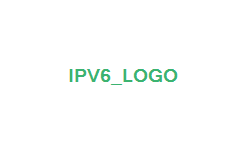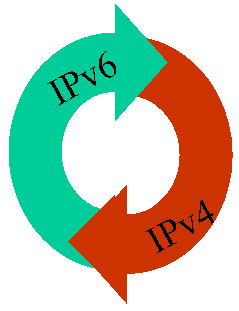ISATAP is an address assignment and host-to-host, host-to-router, and router-to-host automatic tunneling technology that is used to provide unicast IPv6 connectivity between IPv6 hosts across an IPv4 intranet. ISATAP is described in the Internet draft titled "Intra-Site Automatic Tunnel Addressing Protocol (ISATAP)." ISATAP hosts do not require any manual configuration and create ISATAP addresses by using standard address autoconfiguration mechanisms.
ISATAP can be used for communication between IPv6/IPv4 nodes on an IPv4 network. ISATAP addresses use the locally administered interface identifier ::0:5EFE:w.x.y.z where:
- The 0:5EFE portion is formed from the combination of an Organizational Unit Identifier (OUI) assigned by the Internet Assigned Numbers Authority (IANA) (00-00-5E), and a type that indicates an embedded IPv4 address (FE).
- The w.x.y.z portion is any unicast IPv4 address, which includes both public and private addresses.
The ISATAP interface identifier can be combined with any 64-bit prefixthat is valid for IPv6 unicast addresses. This includes the link-local addressprefix (FE80::/64), site-local prefixes, and global prefixes (including 6to4 prefixes). Like IPv4-mapped addresses, 6over4 addresses, and 6to4 addresses, ISATAP addresses contain an embedded IPv4 address that can be used to determine either the source or destination IPv4 addresses within the IPv4 header when ISATAP-addressed IPv6 traffic is tunneled across an IPv4 network.By default, the IPv6 protocol for Windows XP and the Windows .NET Server 2003 family automatically configures the link-local ISATAP address ofFE80::5EFE:w.x.y.z on the Automatic Tunneling Pseudo-Interface (interface index 2) for each IPv4 address that is assigned to the node. These link-local ISATAP addresses allow two hosts to communicate over an IPv4 network by using each other's link-local ISATAP address.



No comments:
Post a Comment